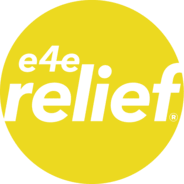In the United States and around the world, cancer is an ever-present concern. In the U.S. alone, an estimated 1.9 million new cancer cases were expected in 2023. And most of us know someone who has been diagnosed with the disease at one point or another.
But the ubiquity of cancer doesn’t make it any less scary.
Along with the fear and the uncertainty comes the cost of battling the disease. Even the tests to determine a cancer diagnosis can be costly, and yet they are critical. Testing determines whether you must begin pursuing treatment, and the sooner it happens, the better your chances of survival.
But what happens if you can’t afford testing? For one woman, it left her with only one place to turn.
In January, after two years of unexplained symptoms, the woman (whose name is being withheld to protect her privacy) visited the emergency room. The doctors performed a sonogram and found a 3-centimeter growth on her uterus. They told her there was a strong chance the growth could be endometrial cancer.
The news was terrifying. At the time, her husband was out of the country dealing with a recent death in their family. He wasn’t expected back for months, and she was struggling to make ends meet. Then, she received word that the procedures required to determine her diagnosis would cost nearly $4,000. Even with insurance, she was still required to pay $3,500 out of pocket. She didn’t have the funds to cover the expense and was forced to postpone the procedure, and prolong the agony of not knowing.
For families who are struggling financially, an unexpected medical condition can present a devastating reality: If they pay for testing and treatment, can they afford the basic costs of living? We recognized this financial challenge when we designed our emergency financial relief programs, and now, among the many events our programs cover, companies can choose to support members of their workforce who are experiencing an unexpected medical condition, which can include cancer as well as other illnesses. For those individuals, a relief grant is a financial lifeline, as it was for this woman. She applied to her company (one of our compassionate clients) and was awarded a grant that covered the cost of her procedure, making it possible for her to answer a vital question about her health while maintaining her financial stability.
Over the past several years, with the specter of the pandemic still looming, health has become a top priority for individuals and the organizations they serve. For many of those companies, emergency financial relief has become a vital part of a holistic workforce well-being program. It helped this woman and countless others this past year, yielding tangible benefits to financial and emotional health, as well as improvements in employee engagement, productivity and retention. It has been a win-win for our clients and their most valuable asset: their people.


